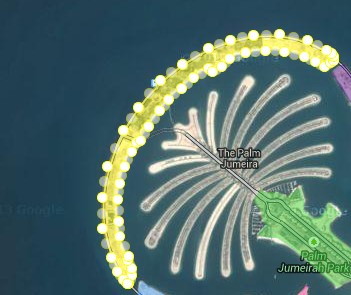Google Earth 3d view/aerial satellite map view/hybrid satellite maps/road map of Petra, Jordan
Google earth satellite map view of Petra, ancient jordanian city with arch
location of Petra in Jordan map

Location of Petra, Jordan in World map

Images of Petra, Jordan
* Petra, ancient city of jordan with archeological importance

* Petra, Jordan

* City of Petra, ancient rich inheritance
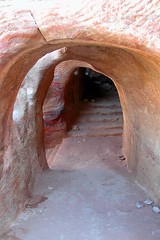
* Petra, Jordan city of archeology archives

* Petra another view
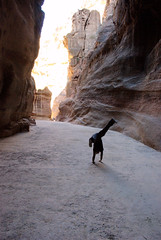
* Petra in sunshine
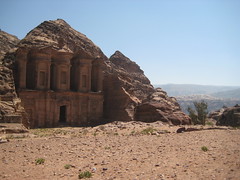
* Petra, Jordan (treasury view)
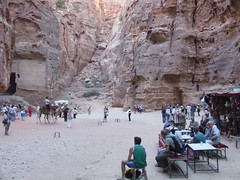
* The Monastery in Jordan's Petra city

* Petra Rock
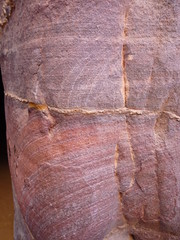
* Images courtesy Flickr.com and its vibrant members
Videos of Petra, Jordan from Youtube
PETRA (Jordan)
Petra is an archaeological site in Jordan, lying in a basin among the mountains which form the eastern flank of Arabah (Wadi Araba), the large valley running from the Dead Sea to the Gulf of Aqaba. It is famous for having many stone structures carved into the rock. The long-hidden site was revealed to the Western world by the Swiss explorer Johann Ludwig Burckhardt in 1812. It was famously described as "a rose-red city half as old as time" in a Newdigate prize-winning sonnet by John William Burgon. Burgon had not actually visited Petra, which remained accessible only to Europeans accompanied by local guides with armed escorts, until after World War I. Geography Rekem is an ancient name for Petra and appears in Dead Sea scrolls such as 4Q462 associated with Mount Seir. Additionally, Eusebius and Jerome (Onom. sacr. 286, 71. 145, 9; 228, 55. 287, 94) assert that Rekem was the native name of Petra, supposedly on the authority of Josephus (Antiquities iv. 7, 1~ 4, 7), Pliny the Elder and other writers identify Petra as the capital of the Nabataeans, Aramaic-speaking Semites, and the centre of their caravan trade. Enclosed by towering rocks and watered by a perennial stream, Petra not only possessed the advantages of a fortress but controlled the main commercial routes which passed through it to Gaza in the west, to Bosra and Damascus in the north, to Aqaba and Leuce Come on the Red Sea, and across the desert to ...
Petra Jordan (a video tour) part 1
One of two video on Petra...Petra I and Petra II adopted from www.youtube.com
PETRA (Jordan) Ancient World Wonder Legends Myths Paranormal
J Frissina takes you to Petra Jordan one of the new world wonders, and rightfully so. Enjoy this spectacular rose red ancient city. The Treasury and Monastery Mysterious lands mythical locations paranormal activity ufo sighting ghost sighting Archaeologic site in Jordan famous for its many stone structures carved in rock. Re-discovered in 1812 by the Swiss explorer Johann Burckhardt, Petra was the capital of the ancient Nabateans and was the center of their caravan trade. They controlled the flow of water to the city creating a natural oasis. This in turn created massive growth and prosperity for the city. dubplanet planetary alignment
Petra (Jordan)
Situated between the Red Sea and the Dead Sea and inhabited since prehistoric times, the rock-cut capital city of the Nabateans, became during Hellenistic and Roman times a major caravan center for the incense of Arabia, the silks of China and the spices of India, a crossroads between Arabia, Egypt and Syria-Phoenicia. Petra is half-built, half-carved into the rock, and is surrounded by mountains riddled with passages and gorges. An ingenious water management system allowed extensive settlement of an essentially arid area during the Nabataean, Roman and Byzantine periods. It is one of the world's richest and largest archaeological sites set in a dominating red sandstone landscape. The Outstanding Universal Value of Petra resides in the vast extent of elaborate tomb and temple architecture; religious high places; the remnant channels, tunnels and diversion dams that combined with a vast network of cisterns and reservoirs which controlled and conserved seasonal rains, and the extensive archaeological remains including of copper mining, temples, churches and other public buildings. The fusion of Hellenistic architectural facades with traditional Nabataean rock-cut temple/tombs including the Khasneh, the Urn Tomb, the Palace Tomb, the Corinthian Tomb and the Deir ("monastery") represents a unique artistic achievement and an outstanding architectural ensemble of the first centuries BC to AD.
Benny Hinn in Petra, Jordan (2011)
Pastor Benny give lessons directly from the Petra Park in Jordan, January 2011 | www.bennyhinn.org











